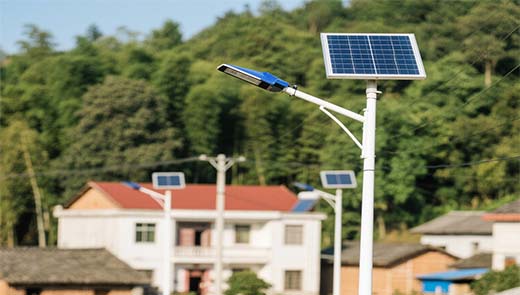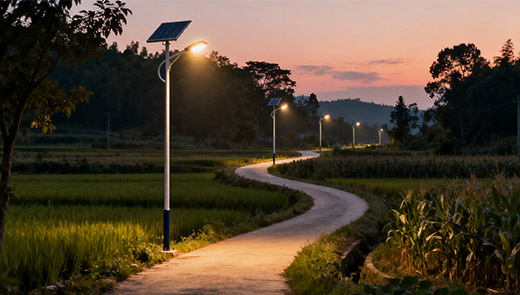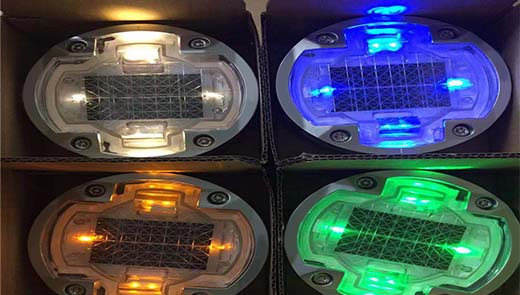The Future of Solar Lighting: Trends and Innovations You Need to Know
Against the backdrop of global efforts to pursue sustainable development, solar street lights are gradually becoming the mainstream choice for outdoor lighting due to their environmentally friendly and energy-efficient characteristics. Data from the International Renewable Energy Agency (IRENA) shows that the global solar market has grown at an average annual rate of over 20% over the past decade, and solar street lights, as an important application area, have also entered a period of rapid development. This article will delve into the current state of solar street lights, emerging trends, and their profound impact on the environment, helping you gain insights into the future direction of this field.
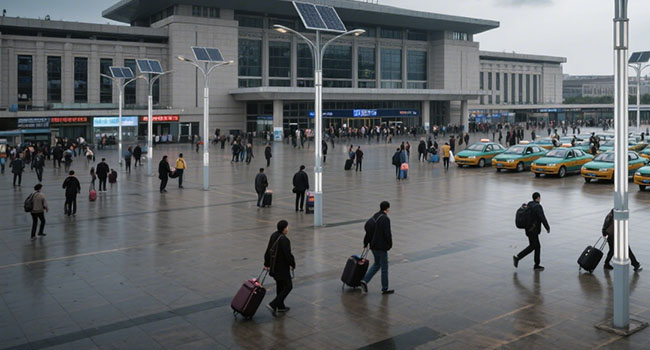
Understanding the Basics of Solar Street Lights
Working Principle
Solar street lights operate through the coordinated work of solar panels, batteries, and lighting systems. During the day, solar panels absorb sunlight and convert it into electrical energy. This process is based on the photovoltaic effect of semiconductors, which directly convert light energy into electrical energy through photovoltaic conversion. The electrical energy is stored in built-in rechargeable batteries, with the current mainstream battery types including lead-acid batteries and lithium-ion batteries; at night, the batteries release electrical energy to power the street lights. This “daytime energy storage, nighttime power supply” model eliminates dependence on traditional power grids, achieving energy self-sufficiency. Taking a common 30W solar street light as an example, its solar panels can meet the lighting needs for an entire night (8–10 hours) with an average of 5 hours of sunlight per day.
Comparative Advantages Over Traditional Lighting
|
Comparison Item |
Solar Street Light |
Traditional Lighting |
|
Energy Supply |
Solar-powered, renewable, inexhaustible |
Electricity, mostly from coal and natural gas, limited and non-renewable resources |
|
Installation Method |
No complex wiring needed, only requires pole and solar panel setup; fast to install, ideal for remote areas |
Requires trenching, wiring, transformer setup; complex and time-consuming with higher costs |
|
Operating Cost |
Low cost after initial investment; no electricity bills; minimal maintenance |
Ongoing electricity costs; high long-term expense; aging wires increase maintenance efforts |
|
Environmental Impact |
Zero carbon emissions, no pollutants; environmentally friendly |
High energy consumption; each kWh produces-0.785 kg of CO₂, contributing to global warming |
|
Service Life |
Solar panels last-25 years; LED lights 5–10 years; longer overall lifespan |
Shorter bulb life; wires and components age quickly, requiring frequent replacement |
Application Scenarios
From the serene walking paths of residential communities to the winding rural roads, from the leisure squares of parks to the expansive industrial zones of enterprises, solar street lights prove their worth in every setting. In urban communities, they not only ensure safe nighttime travel but also enhance the aesthetic appeal of the area through unique lighting designs, creating a comfortable and pleasant nighttime environment. High-end residential areas have adopted solar street lights with artistic designs, integrating lighting with landscape design.
When the lights come on at night, they become a striking feature of the community. In rural areas, solar street lights have addressed the challenge of insufficient traditional power supply, providing convenience for villagers' nighttime travel and promoting the development of rural nighttime economies. In some remote mountain villages in Guizhou, after installing solar street lights, villagers can now venture out at night with peace of mind, and nighttime activities such as small night markets and square dancing have gradually emerged.
The Current State of Solar Street Lighting
Popular Solar Lighting Options Today
Solar Path Lights: Solar path lights use soft lighting to outline garden paths and community walkways, creating a warm and romantic atmosphere while illuminating potential hazards such as potholes and steps on the ground, making nighttime travel safer. Some solar path lights on the market also feature waterproof, dustproof, and corrosion-resistant properties, enabling them to withstand various harsh weather conditions.
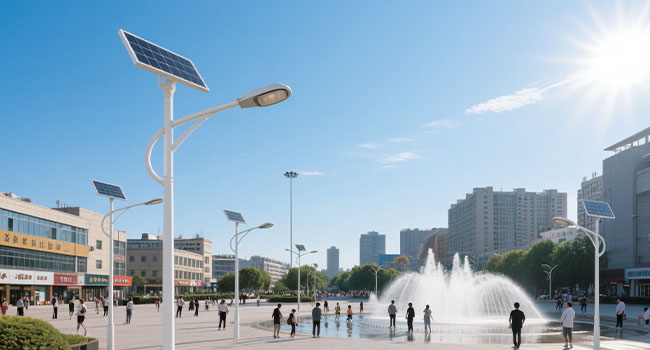
Solar Flood Lights: In the security field, solar flood lights perform exceptionally well. When people or vehicles approach, they instantly emit a bright light, effectively deterring criminals and ensuring the safety of homes and businesses. Without the need for complex wiring installations, they can be quickly deployed in various settings. Solar flood lights typically have a power range of 30–200W, with an illumination area spanning dozens to hundreds of square meters. In some warehouses, parking lots, and other locations, solar floodlights are integrated with smart sensing systems to achieve energy-saving effects such as lights turning on when people arrive and turning off when they leave, ensuring lighting needs while saving energy.
Smart Solar Lights: Smart solar lights are equipped with advanced IoT technology, allowing users to remotely control the lights via a mobile app. Whether setting timed on/off schedules, adjusting light brightness, or changing light colors, all functions can be easily achieved. During parties, lights can be set to vibrant modes; for daily use, they can be switched to soft warm light, catering to different scenarios.
Challenges and Limitations of Solar Street Lighting
Despite their many advantages, solar street lights also have some drawbacks. In areas with insufficient sunlight, especially during winter when daylight hours are short, the lights' battery life may be affected. Take China's northeastern region as an example: in some areas, the average daily sunlight duration in winter is less than 4 hours, which may prevent solar street light batteries from charging fully, resulting in shorter nighttime illumination times. Tree and building obstructions can also reduce the power generation efficiency of solar panels. Research indicates that when the obstructed area exceeds 30%, power generation efficiency decreases by over 50%.
Additionally, compared to traditional street lights, the initial purchase cost of solar street lights is relatively high. Product quality varies widely in the market, and some low-quality products not only have poor lighting performance but also a short service life. Consumers should exercise caution when selecting products. Some unscrupulous merchants reduce costs by using low-quality solar panels and batteries, resulting in significantly reduced product performance and even safety hazards.
Emerging Trends in Solar Street Lighting
Advances in Battery Technology
In the past, lead-acid batteries were commonly used in solar street lights due to their low cost. However, they have drawbacks such as a short lifespan and significant performance degradation in high or low temperatures. The cycle life of lead-acid batteries typically ranges from 300 to 500 cycles, and their charging and discharging efficiency decreases significantly when temperatures drop below -20°C or rise above 50°C. Today, lithium-ion batteries have emerged as the preferred choice due to their high energy density, long service life, and excellent temperature adaptability. Compared to lead-acid batteries, lithium-ion batteries can store 3–5 times more energy in the same volume and can withstand 1,000–2,000 charge-discharge cycles, significantly reducing the frequency of battery replacements and maintenance costs.
Additionally, emerging battery technologies like sodium-ion batteries are gaining traction, offering lower costs and more abundant resources, which could further reduce the cost of solar street lights in the future. For example, a research team has developed a sodium-ion battery that maintains over 80% discharge efficiency in low-temperature environments and reduces costs by approximately 30% compared to lithium-ion batteries, opening new possibilities for solar street light applications in cold regions.
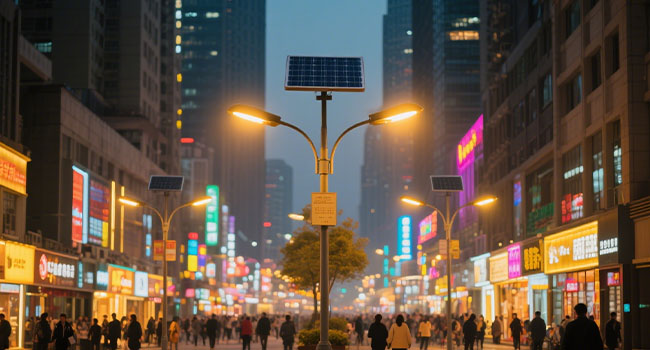
Smarter Controls and Sensors
Smart control and sensor technologies make solar street lights more “intelligent.” By installing light sensors, street lights can automatically turn on and off based on ambient light levels. When equipped with human infrared sensors, the street lights automatically illuminate when someone passes by and remain on for a delayed period after the person leaves, ensuring lighting needs while maximizing energy savings. Statistics show that solar street lights equipped with smart sensing systems can save 30%–50% more energy compared to conventional street lights.
Additionally, some street lights can be connected to the city's intelligent lighting management system for centralized monitoring and unified scheduling. City managers can use the management platform to view the operational status of each street light in real time and remotely control operations such as turning the lights on/off and adjusting brightness. When a street light malfunctions, the system automatically alerts and locates the fault, enabling maintenance personnel to address the issue promptly, significantly improving management efficiency.
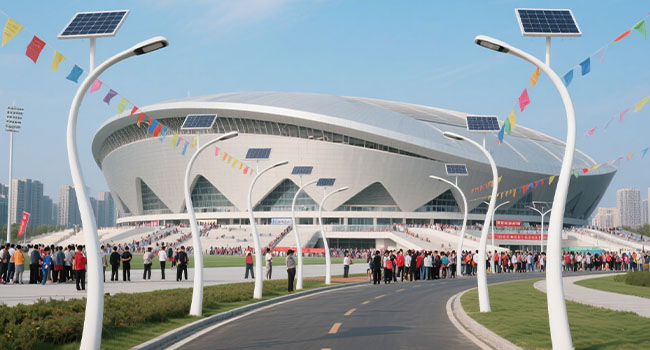
Innovative Lighting Design
The development of LED technology has revolutionized the lighting performance of solar street lights. The new generation of LED lights offers higher brightness, lower energy consumption, and the ability to produce a wide range of colors and color temperatures. Currently, LED lights achieve a luminous efficacy of 150–200 lm/W, while traditional incandescent bulbs only reach 10–20 lm/W. In design, some street lights feature unique reflector structures that evenly distribute light across the road surface, reducing light pollution; others expand the lighting angle to cover a broader area, further enhancing nighttime visibility.
The Impact of Solar Street Lights on the Environment
Solar Lights and Carbon Footprint Reduction
Every solar street light installed reduces reliance on traditional electricity. Taking a 60-watt traditional street light operating for 10 hours daily as an example, it consumes approximately 219 kilowatt-hours of electricity annually, resulting in about 216 kilograms of carbon dioxide emissions. Solar street lights, powered by solar energy, completely eliminate these carbon emissions, playing a positive role in mitigating global warming. According to calculations, if a city adds 10,000 solar street lights annually, it can reduce carbon dioxide emissions by approximately 2,160 tons per year, equivalent to planting 120,000 mature trees. Additionally, solar street lights have relatively low carbon emissions during production, transportation, and installation, further reducing their overall carbon footprint throughout their lifecycle.
Solar Lighting and Sustainable Living
The widespread adoption of solar street lights is a key manifestation of practicing sustainable living principles. It encourages people to choose eco-friendly products and services in their daily lives, reducing energy consumption and resource waste. Increasingly, communities and households are incorporating solar street lights into their lighting plans, which is not only an act of environmental protection but also a responsibility to leave a blue sky for future generations.
In some ecological tourist attractions, the use of solar street lights seamlessly integrates with the natural environment, meeting lighting needs without disrupting the ecological landscape of the scenic area. Visitors can enjoy the beauty of the scenery while experiencing the convenience of green energy, further enhancing their environmental awareness. Additionally, the promotion of solar street lights has driven the development of related industries, creating more green job opportunities and promoting sustainable economic development.
With the continuous advancement of battery technology, smart control technology, and the growing environmental awareness of people, solar street lights will undoubtedly play an increasingly important role in the future of outdoor lighting. Whether it is individual households or urban planners, everyone should pay attention to this trend and actively embrace the green transformation brought by solar street lights.

